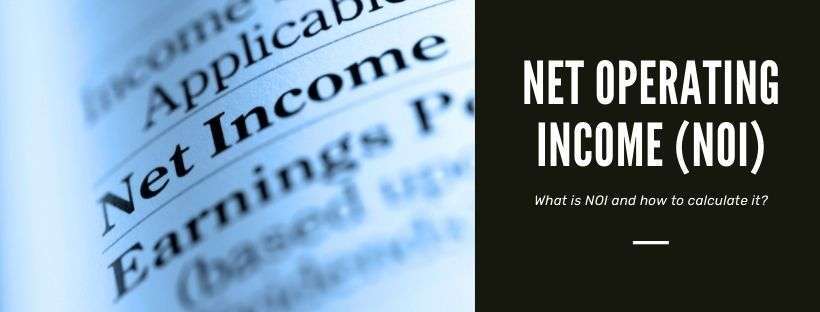
What Is Net Operating Income?
The NOI formula allows a real estate investor to determine how profitable a property could be. The formula is straightforward. Subtract all of the operating expenses for the property from the expected revenue it should generate. Expected income may include rental income but also any additional fees or income associated with the use of the space. Operating expenses may include any type of general expenses for the property, such as insurance costs, taxes, and repairs.
With this information, an investor can see if the cost of operating the property is more than the potential earnings from it, making it easy to determine if that investment is appropriate for their goals and financial needs. Often conducted prior to purchase, it may help in making buying decisions between multiple properties. For example, if there is a consideration for purchasing a convenience mart, this calculation would take into consideration all potential avenues of income from that convenience mart. That may include tenant rent as well as any income from the sale of goods. It would also consider all maintenance fees for the property and any other associated costs, such as the attorney the investor uses or the insurance on the property. This is what makes net operating income so valuable. It takes into consideration all of the income and expenditure opportunities for the property in one single calculation. As a result, the investor knows right away if this is the type of investment that fits the investor’s portfolio or not. NOI is calculated before tax. It is often presented on a property’s income and cash flow statement. Typically, it does not include principal and interest payments on loans, depreciation, capital expenditures, or amortization.Why Is Net Operating Income Important?
The key to using NOI is to understand its value. When an investor uses this calculation, it will help provide insight as to the property owner if renting out the property is worth the expense of purchasing it as well as maintaining it over time.Often, this information can help prospective investors determine which property available to them may offer the highest return or fit within their property investment strategy best. It allows the investor to compare several properties with the same metrics, making it easier to see the difference in each.
How to Calculate Net Operating Income
To calculate this information, it is necessary to have all data available (as much as possible). The simplest explanation is to subtract all of the operating expenses required for the property from the revenue the property could generate. Revenue may include:- Rental income
- Service charges
- Vending machines
- Parking fees
- Other sources
- Property management fees
- Insurance costs
- Maintenance and upkeep costs
- Utility costs
- Property taxes
- Repairs
Net operating income formula:
Net operating income = RR – OE
RR: Real estate revenue OE: Operating expensesExample of How NOI Works: Net Operating Income Formula Example
The NOI can be applied to many types of commercial real estate. In every situation, though, the prospective investor needs to consider all avenues for generating an income for that space.Consider the use of a townhome. A prospective investor wants to learn how much of a potential profit they could generate from the rental of the townhome. The property features 4 townhomes under the same roof and would be leased to resident tenants. Here is a basic overview of what could occur.
Calculate the revenue
The first step is to add up all the revenue that comes from owning this townhome and renting it out on a yearly basis.- The total rent collected ($1000 per month per unit equals $4000 per month, for a gross $48,000 in rental income for the 4 properties)
- Garage rental costs ($50 per month per unit, equaling $200 per month, or $2400 per year)
- Laundry machine use ($25 per month, per unit, equaling $100 per month, or $1200 per year.)
Calculate the expenses
The next step is to determine the total cost of operating the townhome property. Some of the costs could include:- Property management fees: $5000 a year
- Property taxes: $10,000 a year
- Maintenance on the property: $10,000 a year
- Expected repair costs: $15,000 a year
- Insurance: $8,000 per year
Evaluating the Potential of a Property
Not every situation produces a positive result. Suppose a property’s NOI shows a negative result. In that case, that could indicate the property would not be profitable to manage, especially if the costs cannot be lowered in any other way. Some potential investors may think of the long-term outlook after they’ve made repairs or updated the property to lease it at a higher rate. However, if that does not happen, the NOI may not be positive.
Borrowing to Buy Commercial Real Estate Relies on NOI Information
While NOI is a very important determinant of the value of any property for investors, it is also an essential factor for lenders. Most creditors and commercial lenders will rely on this information to determine the potential income generation for the property. Suppose the investors hope to secure a loan on the property. In that case, the lender needs to ensure that the income generation potential here meets the financial obligation the borrower is taking on.
It allows commercial lenders to assess the initial value of that property by getting a better idea – or for casting – cash flows for it. If the property presents a positive, profitable NOI, that indicates to the lenders there may be some stability in this loan, and they may be willing to make it. If the property shows a negative NOI, that may mean the lender will reject the loan request because of the high risk for the property. In some situations, property buyers may manipulate this information. For example, they may be able to defer some types of expenses while accelerating costs. This may include altering the rents and other fees they plan to charge to present a more positive outlook for the lender. However, it is critical to consider the accuracy here since this could play a role in just how profitable any investment could be over the long term. What is a good NOI? That depends on the specific situation. NOI is not a percentage but rather a dollar amount. Investors need to take into consideration what level is appropriate for their unique needs. The higher the NOI is, the more profit potential it has. The use of NOI is very important in nearly all commercial real estate investments. It does not take long to calculate once all of the information on operating expenses and potential income is available. It is essential for investors to be as accurate as possible.




